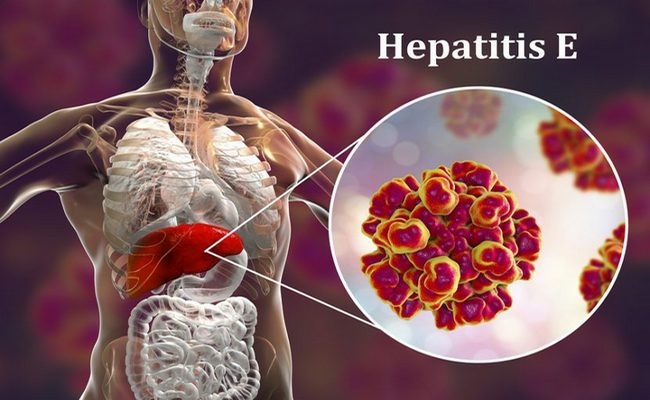Definition of Hepatitis E Virus:
Hepatitis E is the viral hepatitis caused by hepatitis E virus.
Epidemiology of Hepatitis E:
Hepatitis E should be suspected in outbreaks of waterborne hepatitis occurring in developing countries like Bangladesh, especially if the disease is more severe in pregnant women.

Incidence and Risk Factors of Hepatitis E:
Symptomatic hepatitis E infection is most common in young adults.
Incubation period: 3- 8 weeks
Mode of Transmission of Hepatitis E: Faeco oral and water borne.
Signs and Symptoms of Hepatitis E:
May be asymptomatic or mild illness without jaundice that goes undiagnosed, particularly in children, typical sign and symptoms are –
- Jaundice,
- Loss of appetite,
- An enlarged, tender liver,
- Abdominal pain and tenderness,
- Nausea and vomiting,
- Fever.
Investigation of Hepatitis E:
- Anti HAV,
- Serum bilirubin,
- SGPT and SGOT.
Treatment of Hepatitis E:
There is no specific treatment for HAV. The disease is self-limiting and returns to normal within a couple of months. Only severely affected patients need hospitalization. General plan of treatment are –
- Bed rest,
- Diet:
- Protein restricted and no spicy foods.
- Light diet supplemented by fruits, plenty of fluids, ORS, dab water and glucose drinks.
- If severe vomiting: IV fluid and anti-emetic.
- Drugs: Sedatives, hypnotics, and diuretics, are usually avoided. It diuretics are to be used potassium sparing diuretics should be used.
- Clinical and biochemical follow up.
How to Prevent and Control Hepatitis E Virus?
Preventive and controlling measures of HAV and HEV:
1. Proper sanitation:
- Improving water supply,
- Proper excreta disposal,
- Maintenance of hygiene (personal and environmental),
- Sanitary improvements of food stores and kitchen.
2. Health education about:
- Use of safe drinking water and sanitary latrine,
- Proper disposal of excreta,
- Food handlers should be educated in matters of food hygiene,
- Adequate breast feeding and improved weaning practices.
3. Fly control: Controlling breeding of flies in association with faeces and dirty water.
4. Timely control of epidemics: By strengthening of epidemiological surveillance systems.
5. Vaccination: Vaccine for hepatitis A is available but not for hepatitis E
6. Screening of blood donors for hepatitis A.

Maria Khatun Mona is a Founder and Editor of Nursing Exercise Blog. She is a Nursing and Midwifery Expert. Currently she is working as a “Senior Staff Nurse” at “Dinajpur Medical College Hospital”, Bangladesh. She has great passion in writing different articles on Nursing and Midwifery. Mail her at “maria.mona023@gmail.com”
